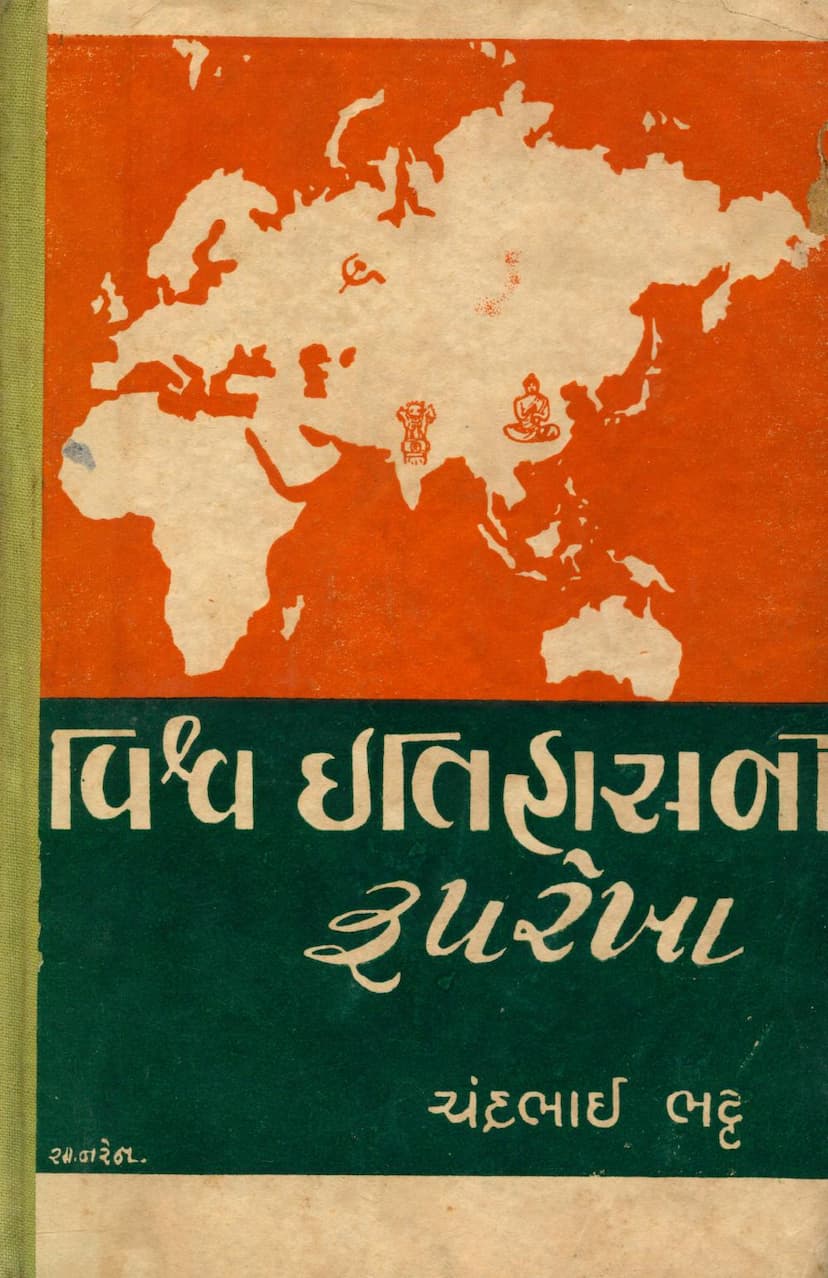Vishva Itihasni Ruprekha
Added to library: September 2, 2025

Summary
The provided Jain text, "Vishva Itihasni Ruprekha" (Outline of World History) by Chandrabhai Bhatt, offers a comprehensive overview of world history from its origins to the modern era. The book, published in 1957, covers various civilizations, political upheavals, and philosophical shifts that have shaped the global narrative.
Key Themes and Content:
-
Evolution of History and Civilization: The text begins by defining history as the "life story of culture" and emphasizes the dynamic interplay between human societies and their environments. It traces the development of human civilization through various stages, highlighting the progress of human society in gaining control over its surroundings.
-
Global Historical Scope: The book systematically explores the history of major ancient civilizations, including Egypt, Babylonia, Assyria, China, India, Persia, Palestine, Greece, and Rome. It delves into their unique contributions to world culture and their influential roles in shaping historical events.
-
Key Historical Figures and Concepts: "Vishva Itihasni Ruprekha" introduces readers to pivotal figures like Herodotus, Thucydides, Confucius, Ashoka, Socrates, Plato, Aristotle, Alexander the Great, Caesar, Muhammad, and figures from more recent times like Voltaire, Marx, Darwin, Einstein, Gandhi, and Nehru, exploring their impact on historical development and thought. It also touches upon significant concepts like the industrial revolution, imperialism, and the two World Wars.
-
Cultural Exchange and Interconnectedness: The text underscores the interconnectedness of global cultures, emphasizing how civilizations influenced each other through trade, conquest, and the exchange of ideas and technologies. It highlights the role of figures like the Phoenicians in spreading knowledge and the impact of trade routes on cultural diffusion.
-
The Dawn of Modernity: The book charts the transition from the ancient to the medieval and then to the modern era, discussing critical junctures like the rise of Islam, the European Renaissance, the French Revolution, and the Industrial Revolution. It also covers the impact of these transformative periods on the global landscape.
-
Focus on India's Place in World History: Given the context of Jain texts, the book pays considerable attention to the history and culture of India, tracing its ancient roots, the influence of Vedic civilization, the philosophical contributions of figures like Buddha, and the impact of events like the Mauryan Empire under Ashoka. It also discusses India's role in the spread of culture and thought to other parts of the world.
-
The Emergence of Global Consciousness: The text concludes by emphasizing the growing global consciousness and the need for peaceful coexistence in the nuclear age, reflecting the geopolitical realities of the mid-20th century.
Overall Approach:
"Vishva Itihasni Ruprekha" adopts a narrative and chronological approach to world history, presenting events and figures in a coherent and accessible manner. The inclusion of 190 illustrations and maps further enhances the reader's understanding of the historical context and geographical locations discussed. The book aims to provide a foundational understanding of world history, highlighting key developments and their interconnectedness.